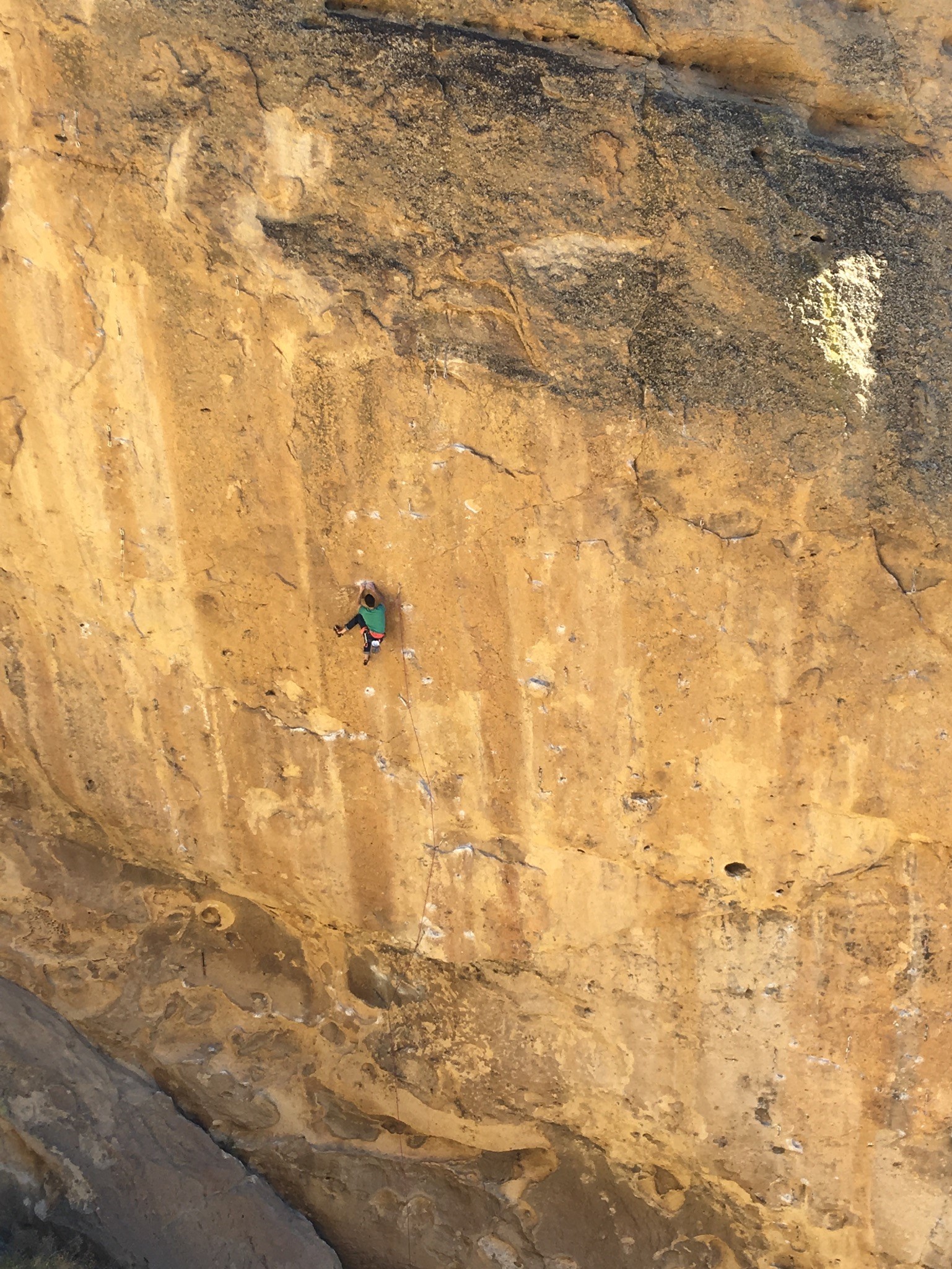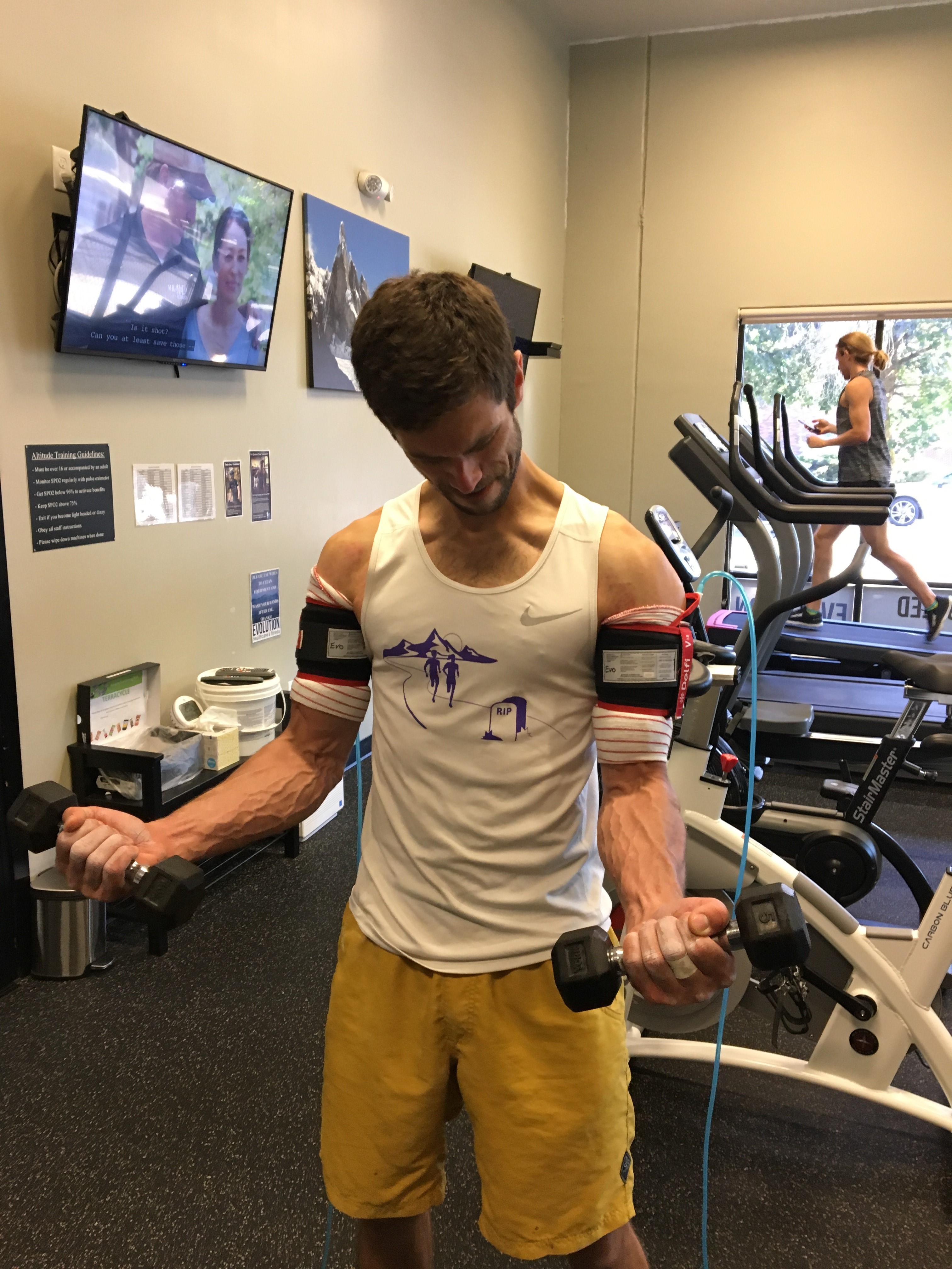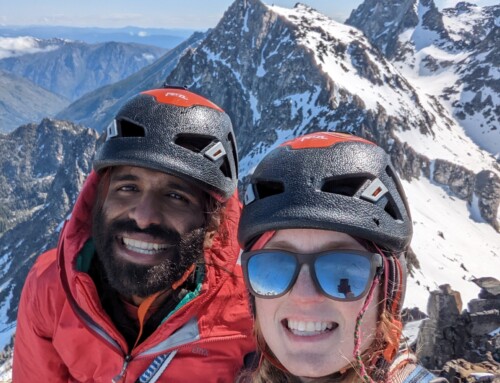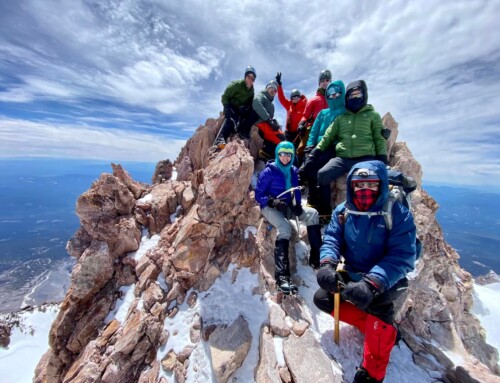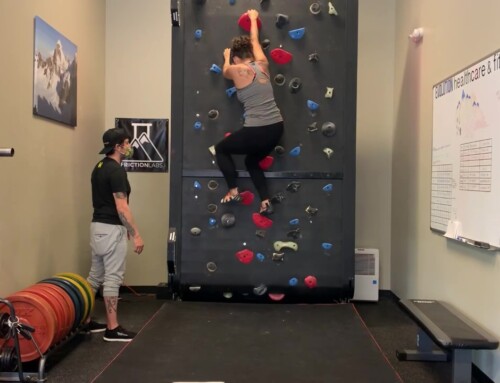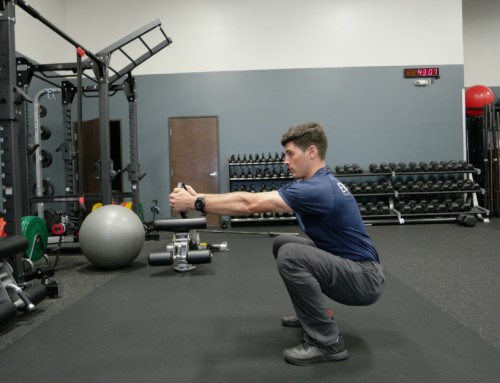Climbing Mountains
From the very beginning of my climbing career. I’ve been interested in every aspect of moving over terrain in the mountains. A competent alpinist is required to build skills on rock, ice and snow. Even though I don’t think I deserve the title yet. I’m always striving to further my skills on different terrain. To build the fitness to support my goals. In some instances, the necessary subcomponents of fitness compete with one another. The aerobic endurance required to ski uphill, covering 2,000 feet of elevation gain per hour. Is quite different from the specific tendon strength needed to crank through 5.12 crimps. Training the lower body and aerobic system to move without fatigue for many hours uphill is quite a departure from hangboard and campus board sessions. In fact, going for an hour-long run before hitting the climbing gym can be detrimental and even frustrating to making progress.
Blood Flow Restriction
Training for everything at once is very difficult. So these days I split up my year into two halves. The first half is focused on aerobic-based pursuits in the mountains. The second is focused on training for difficult rock climbs. This year, in an effort to squeeze every ounce of performance out of my rock climbing training sessions. I experimented with blood flow restriction (BFR) in combination with a standard hangboard protocol. It’s difficult to make any scientifically defensible conclusions. With a sample size of one and no control experiment, but I did come away with my most successful rock climbing season to date.
Training
Working with Dr. Brad Farra at Evolution Healthcare and Fitness. I experimented with how to best use BFR training to complement standard rock climbing training methods. In the first few sessions, I simply became accustomed to how BFR works and feels. Using some light dumbbell bicep curls and bodyweight squats. At the start of each session, we applied the BFR cuffs and inflated them to the proper pressure, which is determined on an individual basis.
We followed a strength regimen that called for 30 repetitions initially, to exhaust all oxygen from the tissue, followed by 3 sets of 15 reps each, conducted in an anaerobic state. Between each set, I rested for 30 seconds. These exercises proved to be very difficult with Blood Flow Restriction and I reduced the weight for the bicep curls down to about 20% of my 1 rep max. In the following sessions, we applied a similar methodology to a hang board protocol.
After the BFR cuffs were inflated, I hung on the largest hold on the hang board for 60 seconds to exhaust oxygen from the working muscle groups. Following a 30-second rest, I completed 3 additional sets of hangs. Each set consisted of a typical 7 seconds “on,” 3 seconds “off” protocol for 6 reps (42 seconds time under tension per set).
I completed these sets with added weight supplied by a weight-belt but I greatly reduced the amount of weight I add when I’m training without BFR. Utilizing a 25mm edge with a half-crimp grip for all of these sets. I completed 2 BFR hang board sessions each week for 6 weeks. We increased weight slightly from the first session to the last session and I was able to fully complete all reps by the last session. (early sessions saw failure on part or all of the last reps of a set).
Process
In general, I found these workouts to be extremely taxing. After the first set, the standard climbing “pump” would set in and wouldn’t be relieved until after the BFR cuffs deflated. It was difficult to concentrate on maintaining good form throughout each rep and to give maximum effort. This resulted in a feeling of both musculature and mental fatigue at the end of each session. It was very helpful to have Dr. Farra present to help time each of the reps and sets, and to keep an eye on my form.
As stated above, my experience and results are particular to me as an individual athlete and may not be applicable to others.
Additionally, because success on difficult rock climbs depends on a multitude of factors like environmental elements, emotional and mental disposition, technical skills and gear selection, it is nearly impossible to control for all these factors in determining success. Nevertheless, following my training period with BFR, I had the most successful rock climbing performance period of my life. I redpointed the classic Thin Red Line (5.12) at Washington Pass and onsighted the Original Route (5.12-) in Red Rocks. I then turned my attention to Smith Rock, redpointing two 5.13a’s and two 5.13b’s. These routes spanned different styles from technical and delicate to overhung and powerful. I managed to redpoint all of these routes in 8 tries or less.
Success
Although it’s impossible to attribute my success entirely to BFR, I do feel like it gave me an edge. At the end of the BFR training period, I felt strong and matched or bettered personal test-pieces or “measuring sticks” in the gym and at the crag. One of the most beneficial aspects of BFR comes from its application to hangboarding. Since BFR can replicate maximum effort under a reduced load, less weight added to the climber is needed to produce the same or even an increased benefit. This means I had less total load hanging from my muscles and my connective tissue.
For those adding 100 pounds or more to weighted hangs this benefit is significant. Less weight hung from the body is advantageous for avoiding injury and it also requires less warm up time. Start to finish Blood Flow Restriction hangboard sessions took about 30 mins. While standard hangboard sessions without BFR used to take me around 1.5 hours. Additionally, I started the BFR training period with a slight pulley injury on my left ring finger. I was able to train despite this finger injury due to less weight and stress applied to my fingers while still forcing my forearms to maximum fatigue.
Benefits
Blood Flow Restriction training has many ancillary benefits but many contribute to healing areas of the body with decreased circulation. Blood Flow Restriction is actually used not only for training. Also for speeding up the healing of connective tissue injuries like tendon or pulley strains. Under a standard hangboard protocol. I highly doubt I would have been able to train through or heal a finger injury during a training season. Overall, I found BFR to be a very efficient use of training time. I likely produced increased gains compared to non-BFR hang boarding and be especially useful for avoiding (or training through) overuse injuries. I plan to incorporate BFR into my rock climbing training every year and would recommend it without hesitation to anyone looking for an additional boost to their climbing performance.

